Runaway Bay, St. Ann, Jamaica
Runaway Bay is a very small town situated on Jamaica's popular North Coast, between the two major resort towns of Montego Bay and Ocho Rios.
The Eastern section of the beach at Runaway Bay in St. Ann, Jamaica.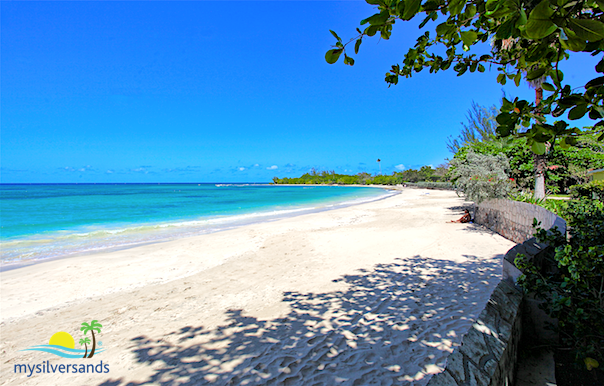
Google Earth View, showing the sweeping arc of the bay, with its gorgeous white sand beach.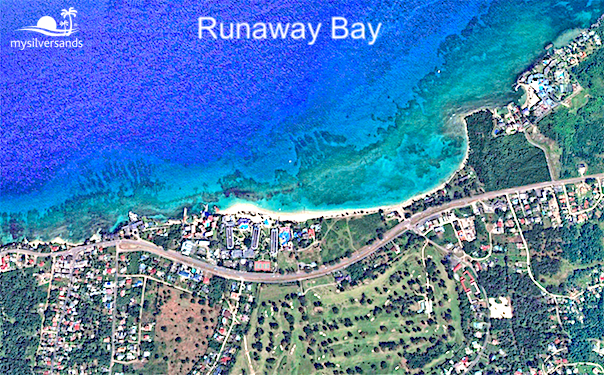
The North Coast Highway runs close to the shore, with hotels and villas on the sea side and a golf course and more villas on the South side.
Nearby, to the West of Runaway Bay is the town of Discovery Bay and to the East is Salem. Runaway Bay is a quiet town. The Main attraction is the gorgeous white sand beach. The Runaway Bay golf course is also popular, and there is the historic Green Grotto Caves just a 6 minute drive away>
The Green Grotto Caves
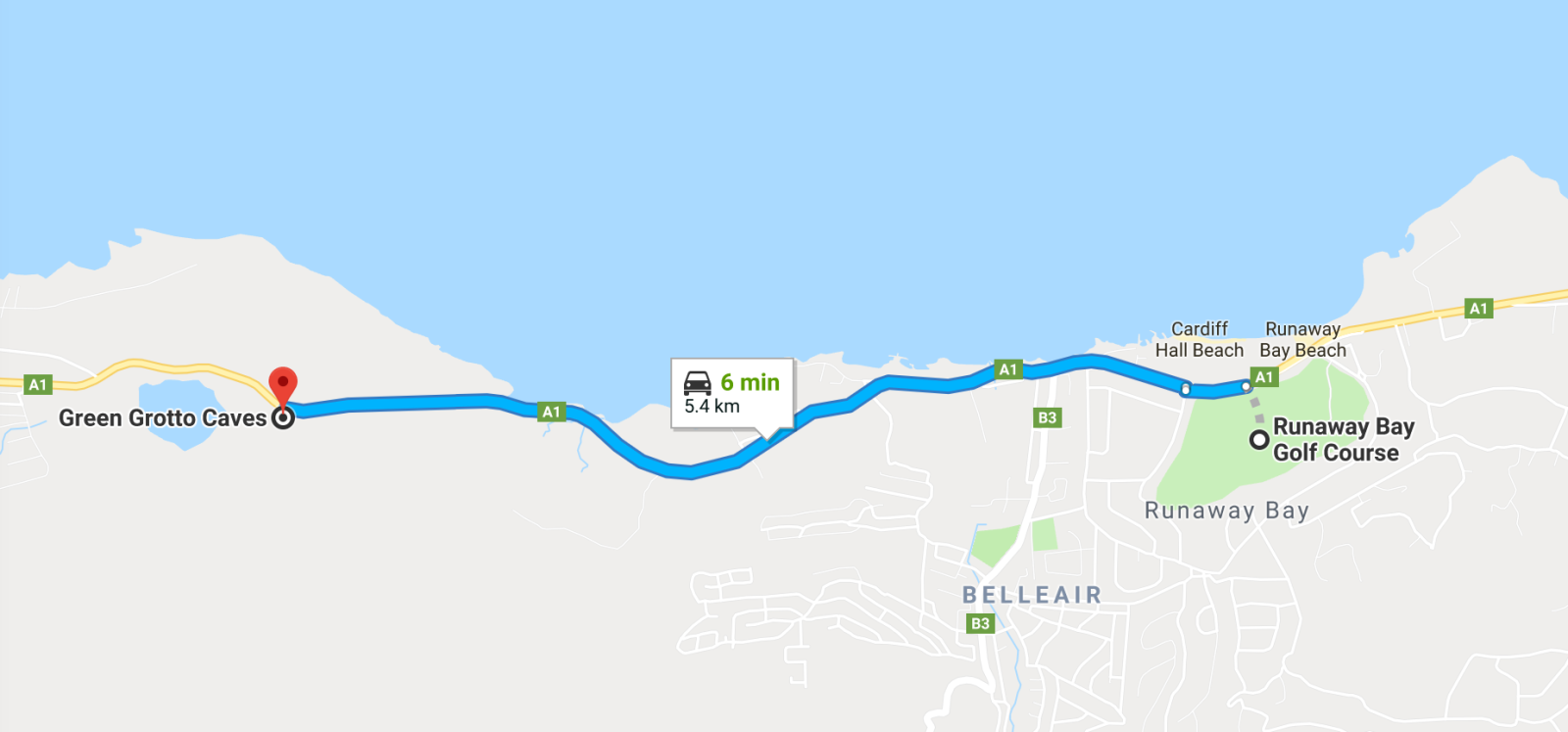
Other points of interest include:
The Ultimate Jerk Centre, 6 minutes drive West.
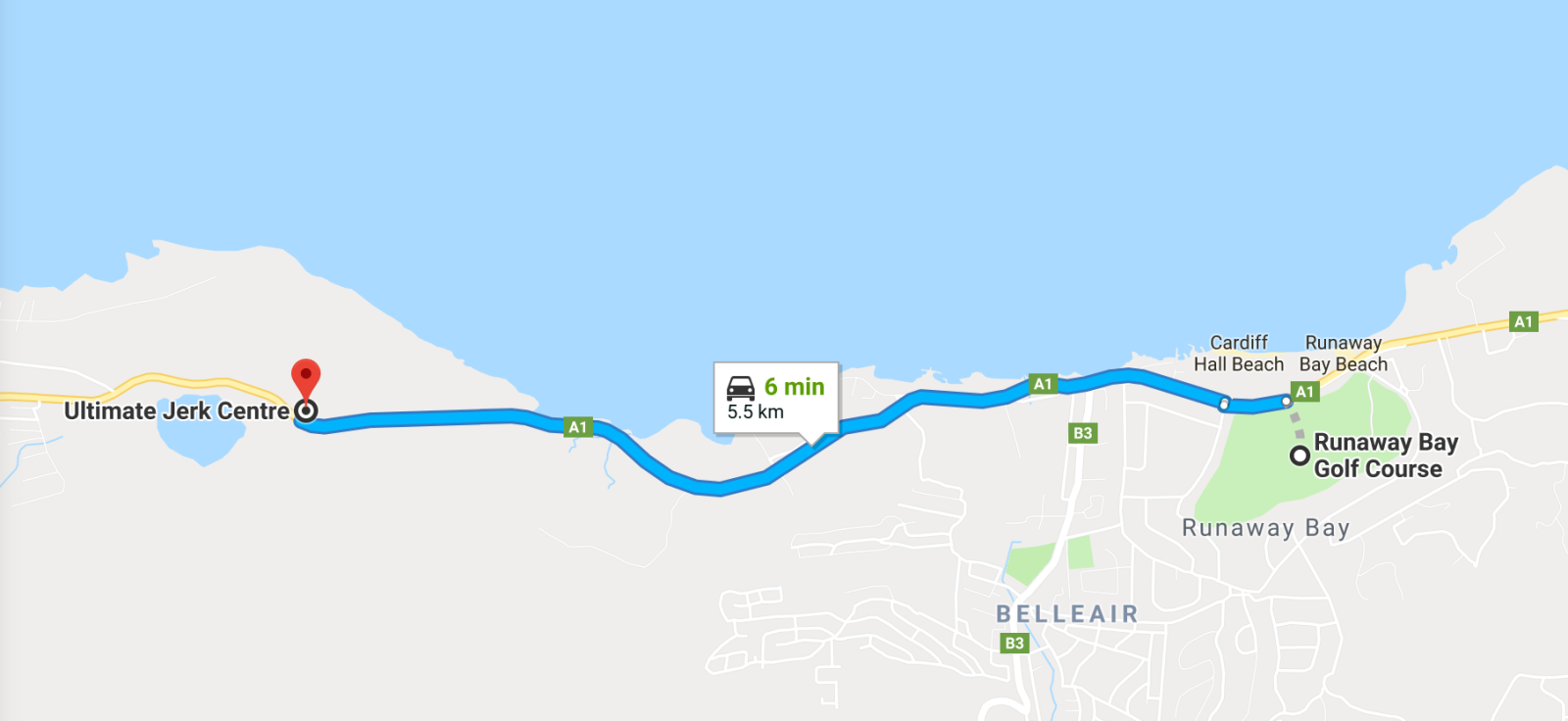
L 'Escargot Restaurant, just 2 minutes drive East.
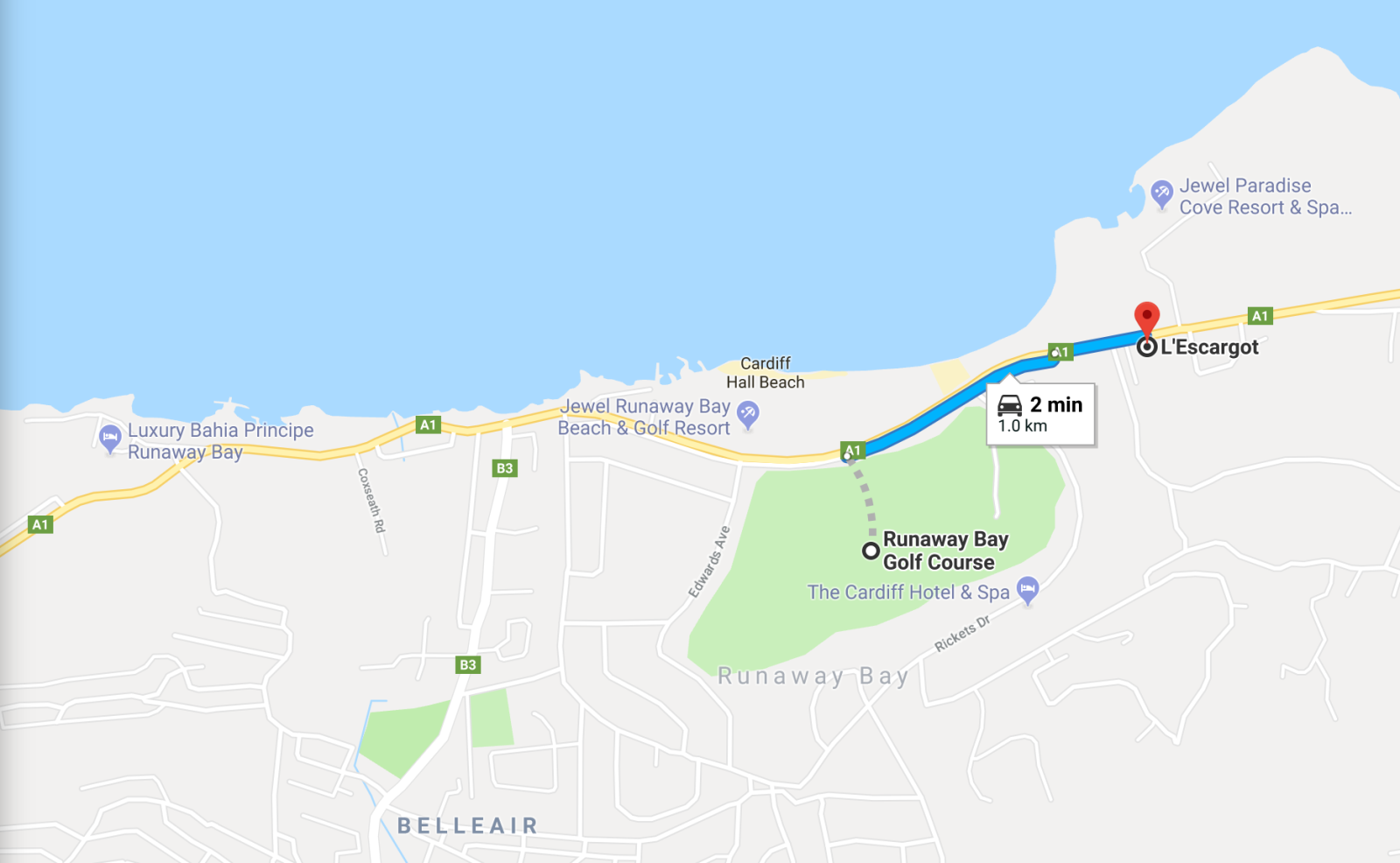
Resort Divers & Water Sports at Sharkies, and Sharkies Seafood Restaurant, 4 minutes drive East.
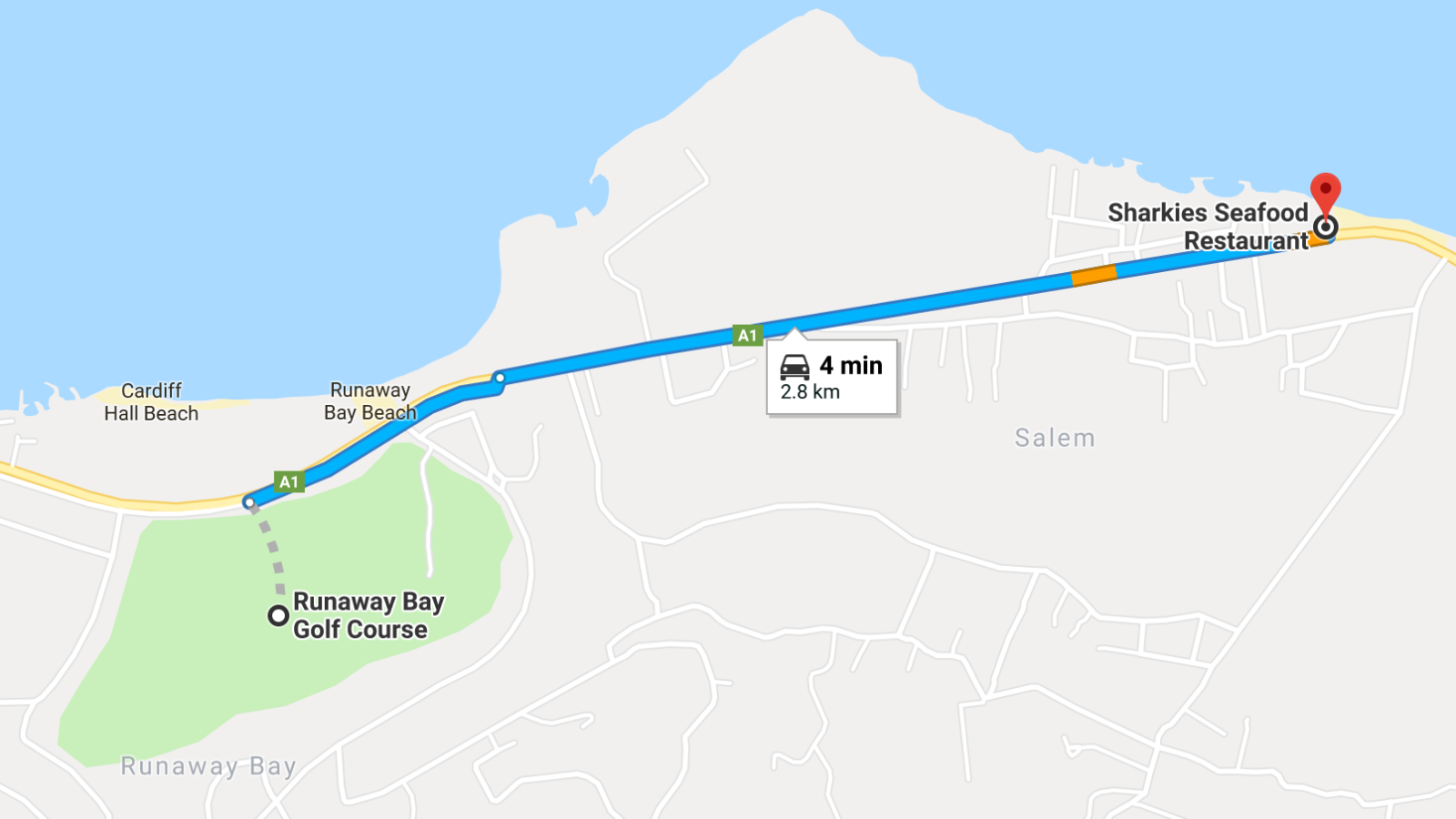
Scotchies Jerk Centre Drax Hall, 18 minutes drive East.
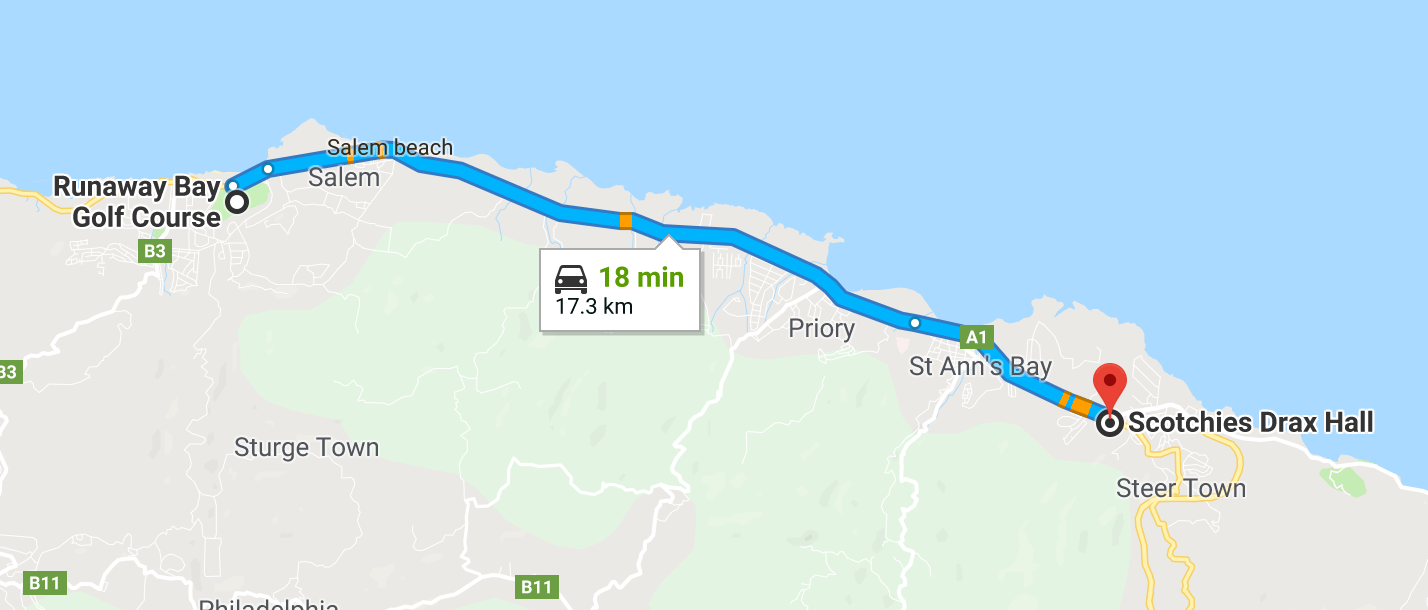
L & M Meats Specialty Grocery Store, 3 minutes drive East.
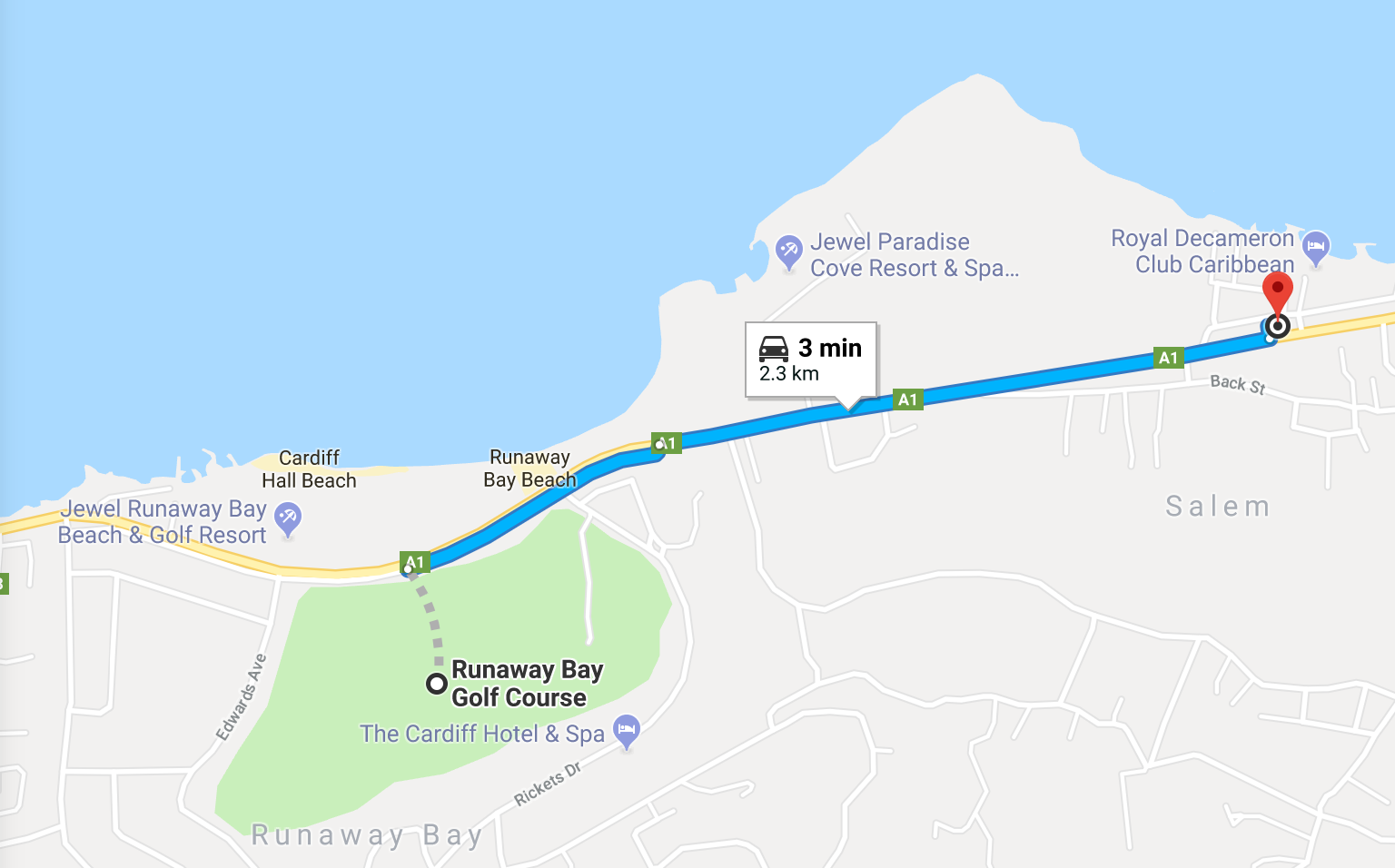
View our Staffed Vacation Rentals on the beach in Runaway Bay:


